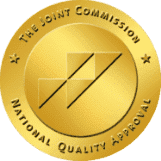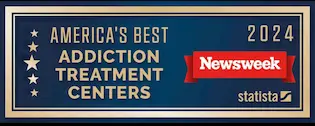Neurofeedback at Iris Healing®
Neurofeedback at Iris Healing®
Neurofeedback at Iris Healing®
Contact Iris Healing® today for neurofeedback therapy in Los Angeles.

Article Contents
Neurofeedback Near Me at Iris Healing®
Recovering from substance use disorders requires a holistic approach that considers all aspects of an individual’s life, including mind, body, spirit, and community. Neurofeedback training is a complementary and alternative method for treating brain dysfunction, an integral part of holistic therapy.1
At Iris Healing®, we take an individual-first approach to treatment that seeks to heal substance use disorders’ emotional, physical, and spiritual factors. As a result of our services, our individuals enjoy lasting recovery and the development of the necessary skills to achieve their life goals.
Find Help Now
Learn More about TMS
The neurofeedback program and transcranial magnetic stimulation (TMS) for substance use are part of our comprehensive, holistic treatment plan. If you’re searching for neurofeedback near me, begin by calling Iris Healing®.
We offer neurofeedback therapy in Los Angeles that you can trust. Iris Healing® employs doctorate-level clinicians who provide the quality of care you expect and deserve.
At Iris Healing®, we make it easy for people to get the treatment they need. We accept PPO, EPO, and HMO insurance plans for our in-network partners. For out-of-network insurances, we’ll accept most PPO policies. When you’re ready for neurofeedback near me, our neurofeedback therapy in Los Angeles is your best option.
Understanding Neurofeedback
The concept of neurofeedback is not new. Researchers have studied the subject for several decades. It’s a non-invasive therapy that retrains involuntary brain waves through operant conditioning and relaxation.2
The changes brought about by neurofeedback are often experienced as a powerful shift in baseline states of being, thinking, and functioning for an individual.
What Does Neurofeedback Mean?
By definition, neurofeedback is the technique of making brain activity perceptible to the senses (by recording brain waves with an electroencephalograph and presenting them visually or audibly) to consciously alter such activity.3How Does Neurofeedback Work?
If some of the brain’s regions are out of alignment, the brain cannot function properly. Our neurofeedback program helps clinicians identify specific areas of the brain that need to be realigned. A quantitative EEG is performed to map out the misaligned areas of the brain.
During the sessions, neurofeedback therapists place sensors or electrodes on specific areas of the individual’s head. Music or other sounds are played through headphones to help the brain reach a more relaxed or comfortable state. From the feedback captured, the neurofeedback therapist can see how the brain is performing compared to what it should be doing.
What Disorders Are Responsive to Neurofeedback?
Neurofeedback is a non-invasive and drug-free therapy. This treatment helps individuals retrain the areas of the brain that are producing symptoms related to such disorders and conditions as:
- Depression
- Anxiety
- Epilepsy
- Autism
- Migraines
- Schizophrenia
- Traumatic brain injury
- Sleep disorders
- Bipolar disorder
- Substance use disorders
- PTSD, OCD, and ADHD/ADD
- Disruptive behavior disorders
Neurofeedback sessions don’t generally produce adverse side effects. Despite this, some individuals experience minor symptoms of anxiety, brain fog, insomnia, and headaches for a short time following therapy.
What Is the Success Rate of Neurofeedback?
According to neurofeedback therapists and published scientific research, the success rate commonly quoted for neurofeedback therapy is 75-80%. However, because some conditions respond more quickly to this form of therapy, providing an accurate success rate is challenging.
Research by government agencies suggests that neurofeedback treatment can significantly improve anxiety, clinical illness, and depression symptoms.4
Research shows that when neurofeedback therapy is incorporated into addiction treatment, the dropout rate is reduced by 60%.
How Can I Find Neurofeedback Therapy Near Me?
In your search for a neurofeedback provider, you may become overwhelmed by the many choices available. Several factors should be considered before making a final decision.
Understandably, you want to work with a neurofeedback provider you can trust to provide you with the best possible neurocounseling. With that in mind, here are some suggestions for choosing the right neurofeedback centers near you.
Selecting the best neurofeedback therapy in Los Angeles is determined mainly by the approach to therapy. The best neurofeedback programs provide a customized, individual approach, not a one-size-fits-all service. Also, treatment programs that target various conditions, symptoms, and disorders are most effective.
If you’re considering neurofeedback therapy centers near you, contact Iris Healing® first.

Neurofeedback at Iris Healing®
We will make sure that all your needs are met during your time with us at Iris Healing®. First, we set up a preliminary meeting to determine what approach is right for you. We will explain our neurocounseling process and set up an EEG appointment.
Your First Sessions
Your first sessions will involve getting to know you better and developing a customized therapy protocol based on your unique characteristics. Next, the technician will place the EEG sensors on your scalp. Typically, the session takes about 30 minutes. Don’t be concerned if the technician changes the sensor placement during this time.
How Much Does a Neurofeedback Session Cost?
Neurofeedback sessions will vary based on the specific treatment center, individual needs, and whether the therapy is brain mapping or BrainCore. BrainCore neurofeedback therapy reads the frequency of areas across the brain. This therapy identifies areas that may be over or under signaling, thus causing various symptoms.
The good news is that some medical and psychological insurance plans cover neurofeedback therapy. At Iris Healing®, we’ll verify your insurance at no charge to ensure that you get the best neurotherapy near you regarding the costs.
Neurofeedback Testimonials
The experiences of thousands of individuals who have received neurofeedback are shared online. Their testimonials confirm that this form of therapy has improved the quality of their life and families. If you’re interested in neurofeedback therapy, take time to read some of their uplifting stories.
Frequently Asked Questions
The decision to begin neurofeedback therapy is asking questions and evaluating the answers. Here are some of the most asked questions about neurofeedback:
- Is Neurofeedback Worth the Money? Compared to the benefits you gain from neurofeedback therapy, its costs are minimal.
- How Quickly Does It Work? Most of our individuals notice a difference in how they feel after six or eight sessions.
- Who Can It Help? Neurofeedback effectively treats people with disorders such as substance use, PTSD, depression, anxiety, and more.
- How Often Do I Need to Come? Depending on the disorder being treated, individuals should attend two or three sessions per week for a total of 25 to 50 sessions.
- How Can I Know It’s Working? You’ll know it’s working when you notice your symptoms steadily decrease, and you feel more in control of your emotions and behavior.
Resources
- https://www.ncbi.nlm.nih.gov/pmc/articles/PMC4892319/#:~:text=Neurofeedback%20is%20a%20kind%20of,audio%20and%20or%20video%20feedback.
- https://www.psychologytoday.com/us/blog/the-resilient-brain/201410/what-is-neurofeedback
- https://www.merriam-webster.com/medical/neurofeedback
- https://pubmed.ncbi.nlm.nih.gov/26392114/




